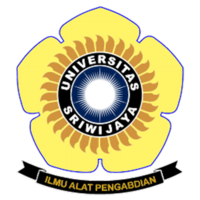Limbah Agroindustri Pengemasan Pisang Mas Kirana (Musa acumunata) Sebagai Pakan Kambing di Lampung
Abstract
Suretno ND, Adriyani FY. 2020. Agroindustry waste in packing house of banana “Mas Kirana” (Musa accumunata) for feed in Lampung province. In: Herlinda S et al. (Eds.), Prosiding Seminar Nasional Lahan Suboptimal ke-8 Tahun 2020, Palembang 20 Oktober 2020. pp. xx. Palembang: Penerbit & Percetakan Universitas Sriwijaya (UNSRI).
The agricultural commodities produce waste that is important for livestock. This study discusses the potential of banana packaging agro-industry waste for goat feed. The study was conducted at the Packing House (PH) “Nakula” that is packed Banana “Mas Kirana” in Sumberejo Tanggamus during February-July 2020. The sample were used are 30 bunches. The observed variables were weight of banana bunch, weight of banana bunch in PH, number of combs, weight of wasted banana bunch (after a decent comb is taken), weight of stem bunch, and weight of rejected comb. The data were averaged and analyzed descriptively. The results showed that weight of banana bunch in PH is lower (11.51%) than farmers because PH only accepts bunch with one segment above top comb. “Mas Kirana” bunch weight from farmers is 6.08 ± 1.17 kg, meanwhile from PH is 5.38 ± 1.57 kg with ± 6 combs/bunch. Weight of stem bunch is 0.6 ± 0.2 kg and weight of rejected banana is 0.38 ± 0.2 kg. The total of waste in once production is 119,97-269,94 kg stem bunch (3.119,22–7.018,44 kg/year) and 75.97-170.92 kg rejected fruit (1.975,1 – 4.443,99 kg/year). These stem bunches can be used as feed for 2 - 4 goats per day, while the rejected bananas are sufficient for 3-6 goats per day. The result of proximate analysis showed protein content of stem bunch and rejected banana was 6.15% and 3.71%. After the silage process with 10% bran, the protein become 12.38% and 7.18%. Bunch, rejected banana and the silage have potential to be used as goat feed.
The agricultural commodities produce waste that is important for livestock. This study discusses the potential of banana packaging agro-industry waste for goat feed. The study was conducted at the Packing House (PH) “Nakula” that is packed Banana “Mas Kirana” in Sumberejo Tanggamus during February-July 2020. The sample were used are 30 bunches. The observed variables were weight of banana bunch, weight of banana bunch in PH, number of combs, weight of wasted banana bunch (after a decent comb is taken), weight of stem bunch, and weight of rejected comb. The data were averaged and analyzed descriptively. The results showed that weight of banana bunch in PH is lower (11.51%) than farmers because PH only accepts bunch with one segment above top comb. “Mas Kirana” bunch weight from farmers is 6.08 ± 1.17 kg, meanwhile from PH is 5.38 ± 1.57 kg with ± 6 combs/bunch. Weight of stem bunch is 0.6 ± 0.2 kg and weight of rejected banana is 0.38 ± 0.2 kg. The total of waste in once production is 119,97-269,94 kg stem bunch (3.119,22–7.018,44 kg/year) and 75.97-170.92 kg rejected fruit (1.975,1 – 4.443,99 kg/year). These stem bunches can be used as feed for 2 - 4 goats per day, while the rejected bananas are sufficient for 3-6 goats per day. The result of proximate analysis showed protein content of stem bunch and rejected banana was 6.15% and 3.71%. After the silage process with 10% bran, the protein become 12.38% and 7.18%. Bunch, rejected banana and the silage have potential to be used as goat feed.
Keywords
rejected fruit weight, stem bunch weight, silage
Full Text:
PDFArticle Metrics
Abstract view : 729 timesPDF - 1149 times
Refbacks
- There are currently no refbacks.

